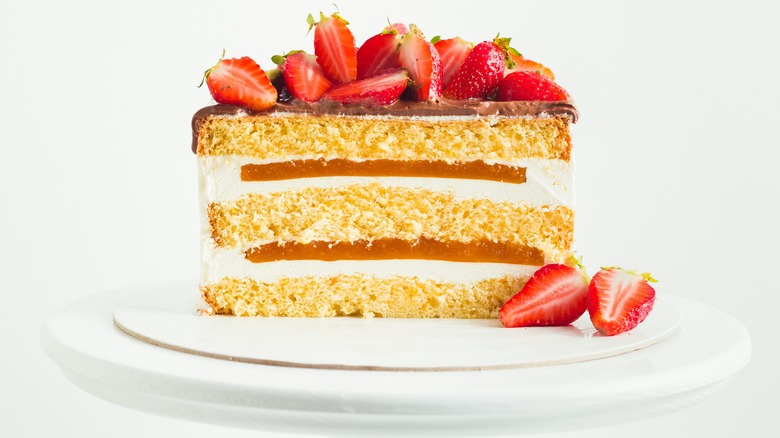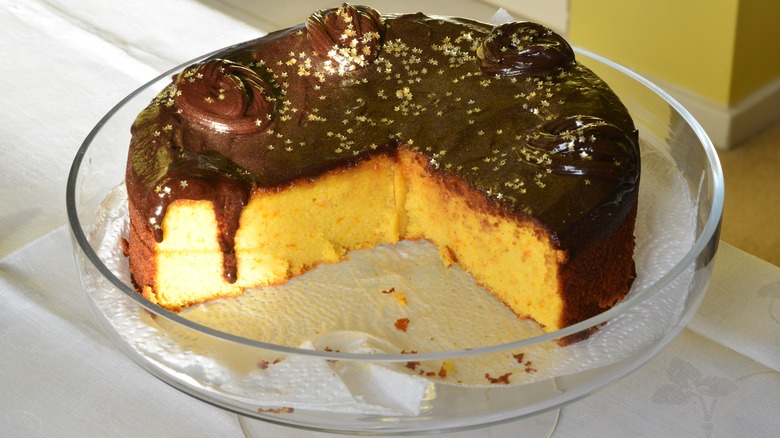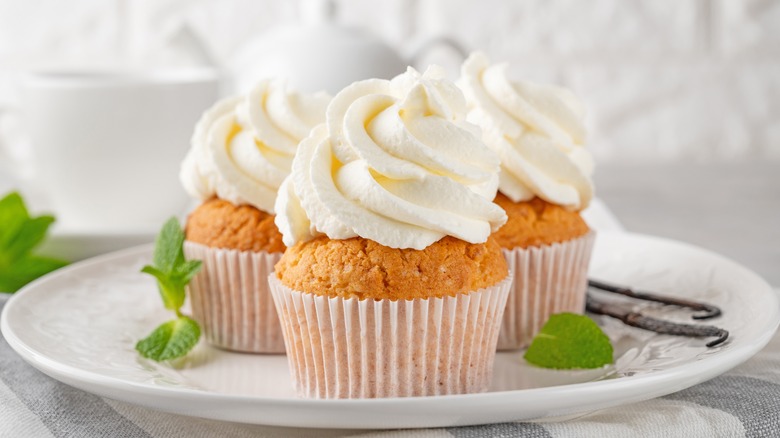The Yellow Cake Method That Goes Against The Laws Of Batter Mixing
To make a cake, you cream the butter and sugar first and then add all the other ingredients. This is the rule of cake — the quintessential way of making a cake moist and delicious is to make sure the butter and sugar are fluffy before adding any other ingredient. But what if that tried and true method isn't the only method? What if there's a better way to make the batter for your cakes?
There's a yellow cake method that seems to go against all the laws of mixing cake batter because it starts by adding all of the dry ingredients and then adding the butter. Once the butter has been added, this method (called "reverse creaming") requires you to mix the butter and dry ingredients until everything looks like sand. It's not until this point that you add the wet ingredients to the mix. The result? A cake that's deliciously moist and has the perfect texture.
Why reverse creaming works so well with yellow cake
A yellow cake should be slightly dense and bright yellow or golden. Unlike chocolate cake, which is typically on the moister side, yellow cake gets its classic appeal from a thicker texture. Reverse creaming produces cakes that are flatter on top and slightly heavier, which is what an old-school yellow cake should look and feel like. Using this method can initially feel very strange, as bits of ground flour and butter take over your mixing bowl, but this is one of those times when you'll need to trust the process.
Another benefit of making a yellow cake using the reverse creaming method is that these cakes can be stacked without concern that a cake may collapse or fall. Cakes that are less dense or on the fluffier side tend to break apart easily and can be hard to stack. Because this creates heavier cakes, you can stack a few on top of each other, and the result will be a sturdy, layered cake. The reverse creaming method can also be used to make different types of cakes if you start by creaming the dry ingredients first — though it's not a method that works without the inclusion of butter.
Not for every cake
The one caveat when using the reverse creaming method is it won't work if you're not using dairy in your cakes. The initial step of creaming the butter and dry ingredients together ensures that the butter in a recipe is fully coated with the dry ingredients before adding any wet ingredients to the mix. If you use oil to create a nondairy cake, the dry ingredients cannot properly mix with the oil and will not result in the same finished cake texture. If your cake requires oil instead of butter, you should use the traditional mixing method.
If you want to make a yellow cake using nondairy butter, the reverse creaming method should work, as you can still coat the nondairy butter with the dry ingredients. Yellow cake has been a birthday party staple for decades, and you can easily make the perfect birthday cake by eschewing the traditional way and using the reverse creaming technique instead.


